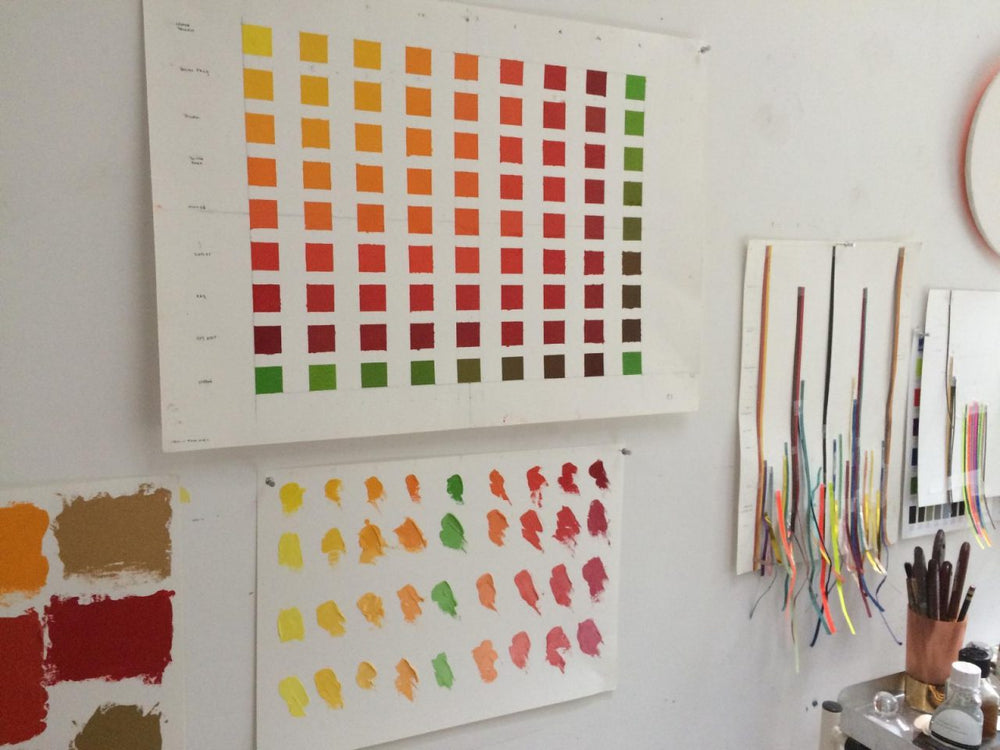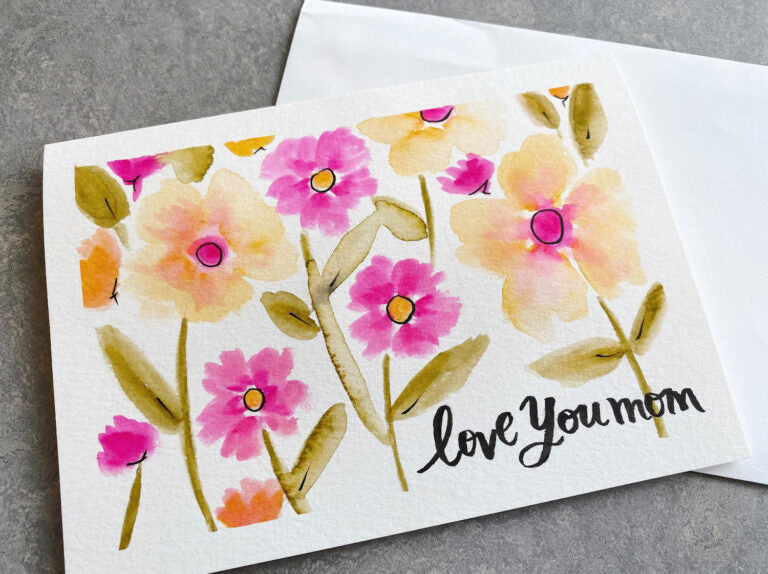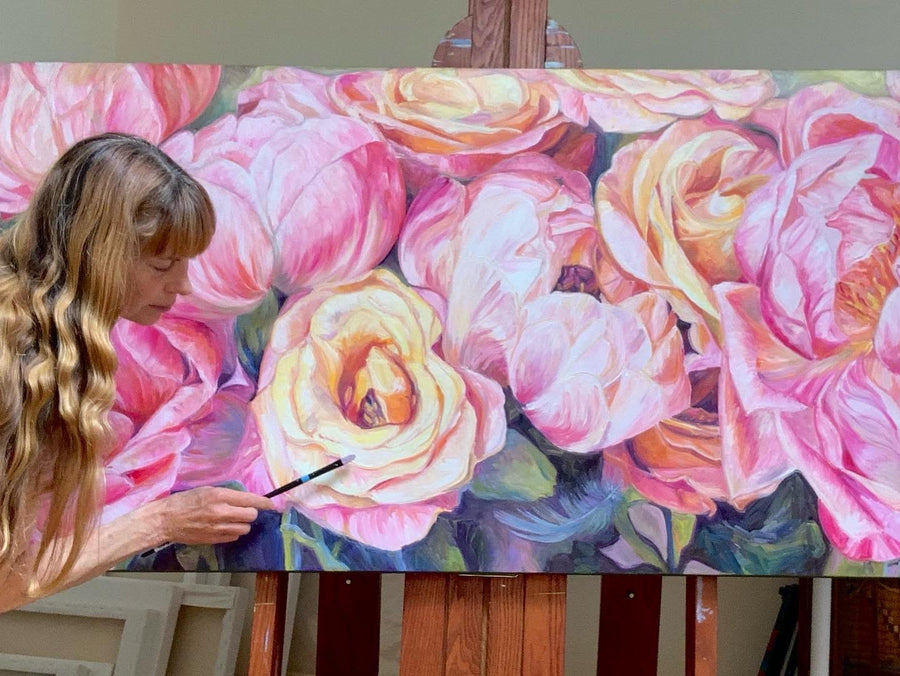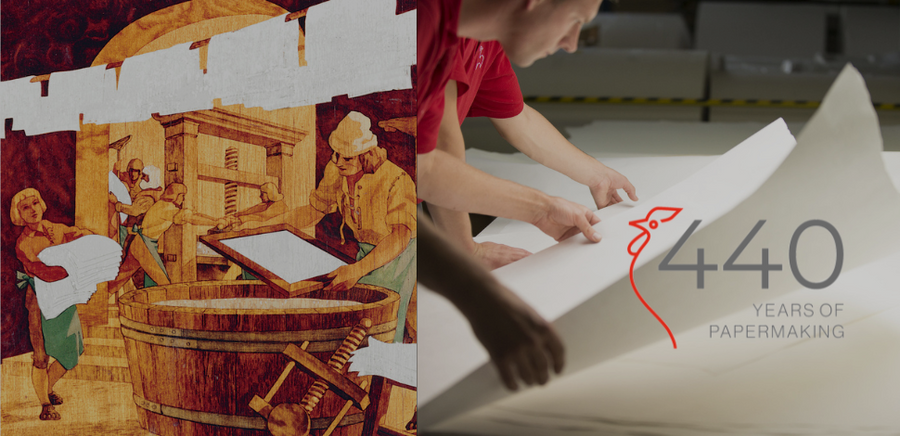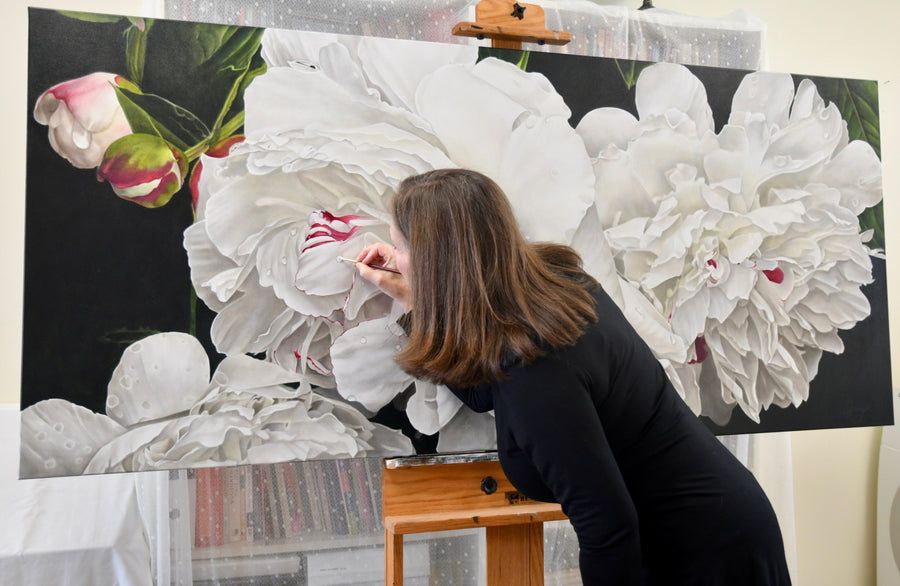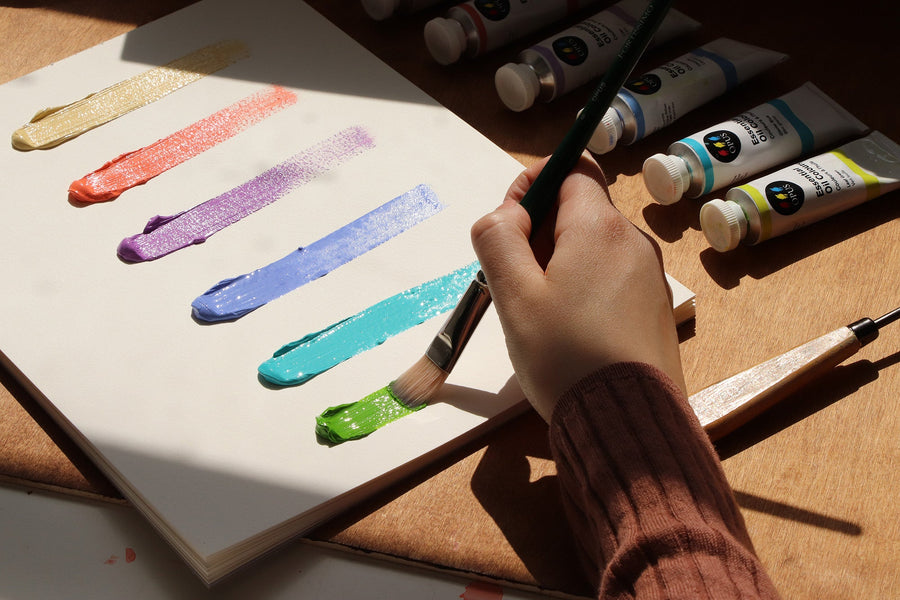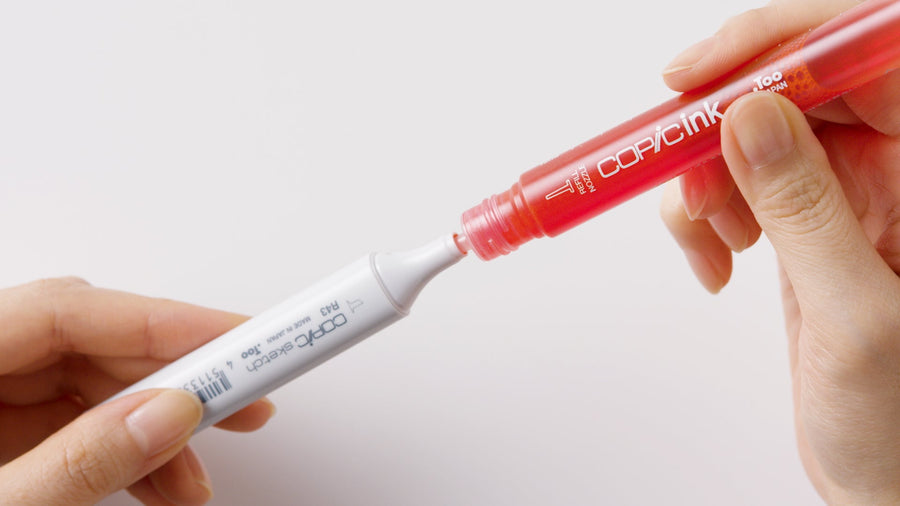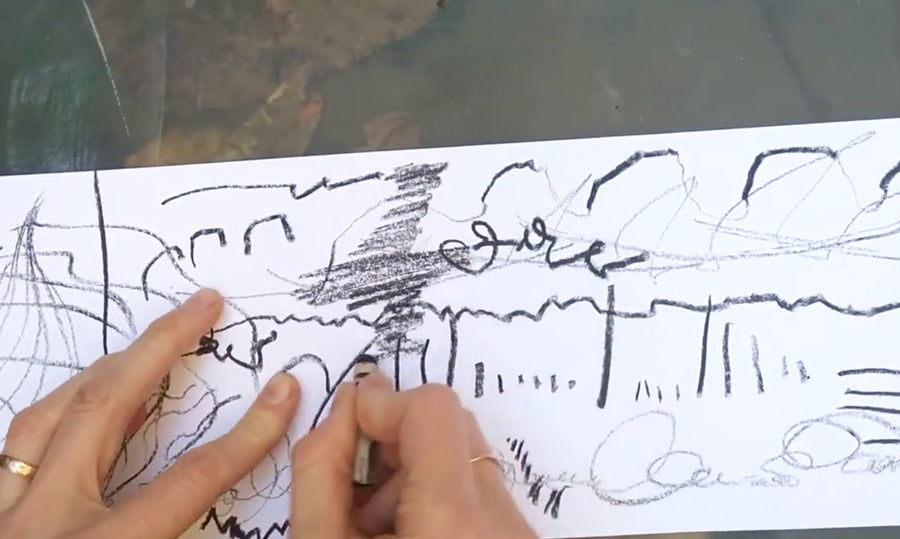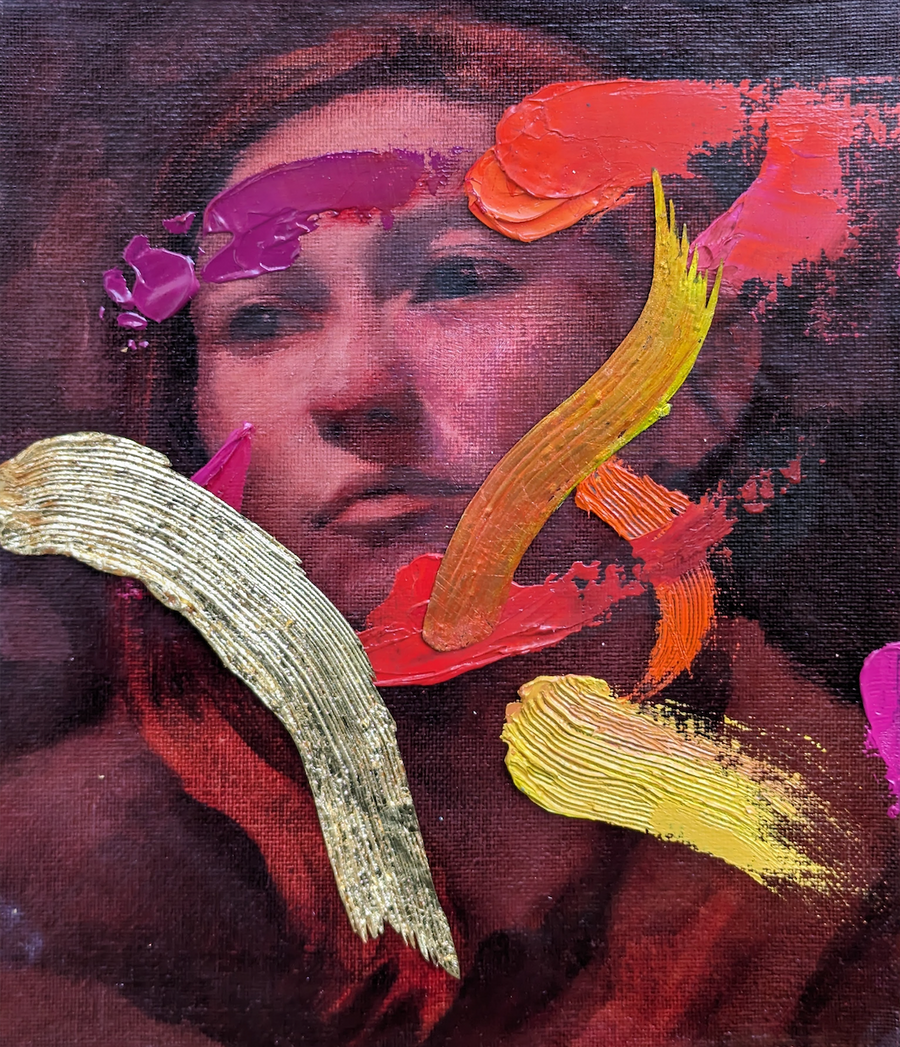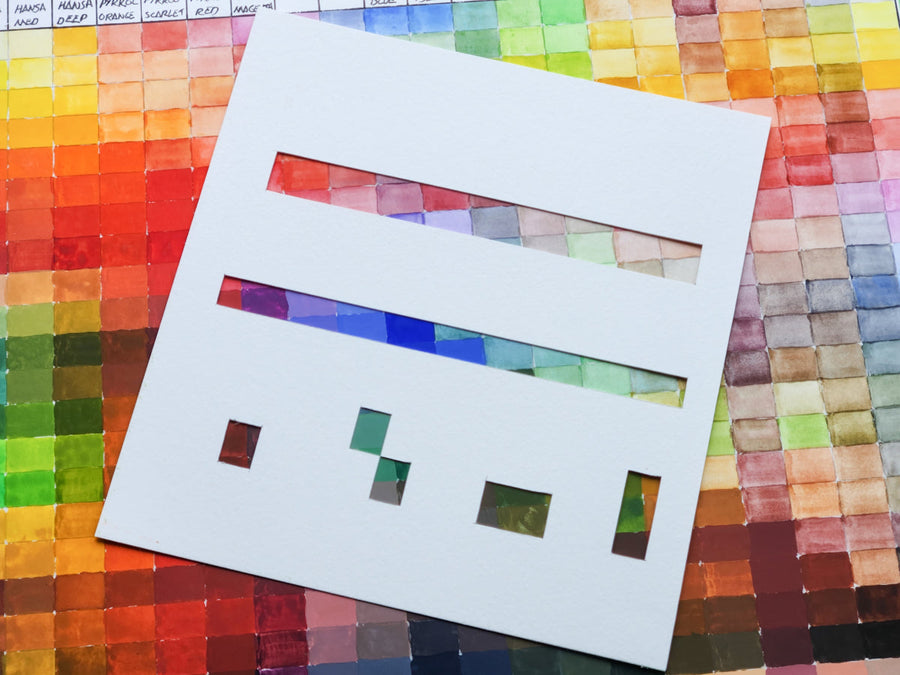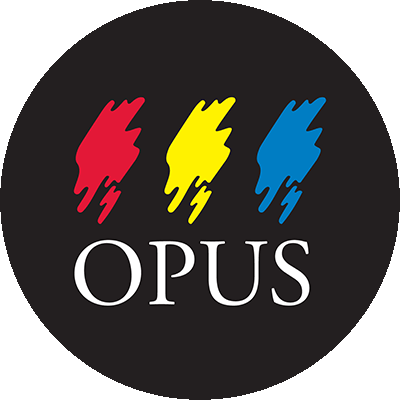Jo Volley is an artist and who lives and works in London. Her work is concerned with measurement, space and colour as light and employs a wide range of material and mediums. It draws attention to the nature of archiving, historic materials, ideas of craftsmanship, incorporating traditional and contemporary techniques. She is Slade Deputy Director (Projects) and Coordinator of the Material Research Project & Network and the Material Museum at the Slade School of Fine Art, UCL where she studied from 1972-77 and has taught since 1986.
Jo in an interview with Winsor & Newton, talks through her experience and experimentation using Cadmium-Free Artists’ Oil Colour.
I remember the first time I used cadmium lemon. It was 1972 as an undergraduate studying at the Slade, and my brother, also a student, recommended it to me as it would ‘hit lemon yellow for 6’. It certainly did in terms of intensity and along with cadmium yellow and red soon was to become an ‘anonymous hero’ on my palette.
It seemed to me, at that time, my paintings took on an extra cool luminosity and the economy of range I was searching for. It did what it said on the label, a strong cool yellow with good tinting strength, vibrant and buttery. The sense of touch felt through the length of the palette knife, measuring the amount of stuff, its weight, in relation to the resulting mixture; is so very important to the painter’s muscle. The eye hand coordination, the ability to quantify in an instant, to trust all of that in the moment of making – you don’t want anything, or anyone for that matter, to disrupt the process. As an artist, for me, the aesthetic is in the materiality, historic and cultural value of a colour, far removed from what one might call subject matter.

My ideas are driven by how something sits on a surface as an entity or how it operates spatially, particularly in relation to its physical qualities and potential – the stuff that makes the thing, the matter and energy of making and its intrinsic beauty.
New colours are always fascinating, their invention and intention brings a new narrative. So, the question is, what do we think of the new cadmium-free paint? I think the first conceit is, can you instinctively see and feel the difference? Well, from some 48 years’ experience, yes, I can observe a shift. But the point is, does it do what it says on the label?
Initially, I began by exploring the range of 9 colours by creating my own cadmium-free colour chart of each colour in a 50:50 paint ratio. The resulting chart is a crude affair, but the exercise very much satisfied my desire to measure all things, (which is very much embedded in my psyche and my education at the Slade in the 70’s), and that the aesthetic is partially out of my hands and a product of fact.
I used the paint liberally to experience its weight and liked its balance on the palette knife. The saturation of the colours, mass, and resulting mixtures were clean, vibrant and luminous. I particularly liked the new mixtures I made with cadmium green which I hadn’t experienced before.

I then began making mixtures of each cadmium-free in increments of 25:50:75: with titanium white to review their tonal range and tinting strength. I made a small chart of a thin layer of each colour to observe their undertone, before going on to make a collection of nine small circular panels in which to celebrate each colours identity and optical properties.
As an alternative to using cadmiums, for all those reasons one might wish to use a counterpart, I can honestly endorse their use and feel no prejudice towards them and found working with them has certainly led me to a new place. I’m currently in the process of developing these nine panels through various arrangements – to identify and quantify their properties – and to think of them not so much as equivalents but as a new form and to celebrate their invention.
Winsor & Newton innovated by creating cadmium-free formulas that provide true parity in colour and performance to genuine cadmium paints. Cadmium pigments are much loved by artists due to their ability to deliver intensely bright, lightfast results. But cadmium is a heavy metal and although there is no globally harmonised view, there are some concerns about its safety.
Don’t confuse these with hue colours. Cadmium hues already exist, using a blend of pigments to create something resembling an original cadmium colour. Winsor & Newton cadmium-free oil colours are something very different. Each one identically matches the colour of genuine cadmium and behaves in the same way.
